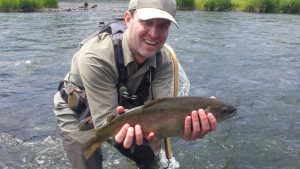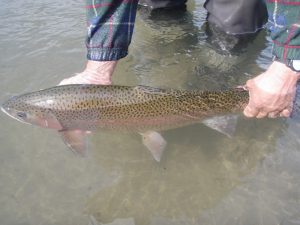As with the South Fork, significant BWO and mahogany dun hatches on the lower river will happen later in this month. During daytime visits here presenting terrestrial insect patterns is the best way to attract fish. While fishing from a boat, trail that hopper pattern with a favorite bead head nymph. And as with evening visits to the South Fork, observe shallow waters for bait fish concentrations. Such a presence is a clue that streamer patterns will attract larger fish moving in around sunset to forage on these. The Last Chance-Harriman section of the river features AM trico and speckled dun spinner falls, while daytime success is best met through presenting terrestrial insect patterns. While fishing during late evenings, consider drifting a hair mouse pattern along vegetated banks. You may not interest many fish, but the one(s) you do will surely be very large. On doing so, you can get away with using a heavier tippet making it a bit easier to play that big fish entering the now copious weed beds present in the river. It is the time of year when good fishing in the Henry’s Lake Outlet section begins to fade. Even though flow out of Henry’s Lake remains a bit above 100 cfs, warm water temperatures are present. This means larger fish will begin migrating downstream to cooler water in the Henry’s Fork just below Big Springs. Many fly-fishers overlook the river between the Big Springs-Henry’s Lake Outlet confluence and below because of the numbers of recreational boaters. An evening visit to this stretch of water avoids conflicts with these folks and increases your chances that a well-placed streamer will bring up a very large resident trout.


